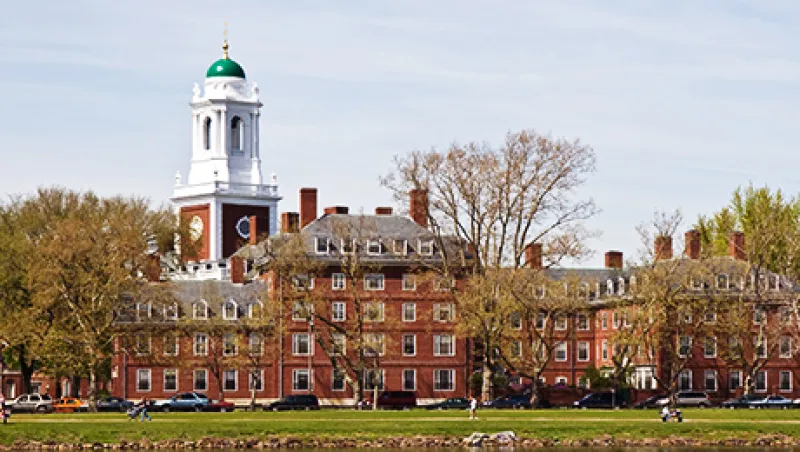Despite a combative and tumultuous year, strong public equity performance and savvy hedge fund selection helped Harvard University’s $56.9 billion endowment exceed its benchmark.
Harvard generated an 11.9 percent return for the 2025 fiscal year, surpassing its long-term benchmark of 8 percent. Since the current management team under Harvard Management Co. CEO N.P. “Narv” Narvekar started eight years ago, the portfolio has returned an annualized 9.6 percent.
In his annual letter to investors and the Harvard community, Narvekar wrote that while endowment results “were dampened by having less public than private equity… performance overall was bolstered by discerning manager selection.” He added that public equity and hedge fund managers “delivered returns well above their benchmarks,” with private equity also producing “double-digit gains across diverse strategies and stages.”
These returns came during a year in which the Cambridge, Massachusetts university battled the White House for autonomy over its operations and faced funding freezes and a federal tax hike. With spending from the endowment now accounting for nearly 40 percent of annual operating revenue, Narvekar wrote that long-term performance is critical.
Harvard has begun to increase the portfolio’s risk, largely through greater equity exposure. (Its current public equity exposure is 14 percent, unchanged from the year before.) Its allocation to uncorrelated hedge funds (at 16 percent) has let the endowment moderate risk and provides access to liquidity across market cycles. “As the university faced operating stressors this year, the endowment’s liquidity has allowed it to serve as a ballast,” Narvekar wrote.
The endowment has also used the secondary market to refine its private equity holdings. The HMC chief stressed that these transactions “are not signs of constraint or liquidity concerns but rather of intentional, disciplined portfolio management.” The endowment currently has 41 percent allocated to private equity, up from 39 percent in FY24.
Research from Old Well Labs shows that while most Ivies have either kept their allocation steady or reduced their exposure, Harvard has increased its hedge fund exposure over the past 10 years. OWL co-founder Megan White observed that this year, however, the school’s hedge fund exposure is relatively unchanged year-over-year (at 31 percent vs. 32 percent).
Despite exceeding its benchmark, Harvard still lags behind its peers, with M.I.T. having returned 14.8 percent for its $27.4 billion endowment. Meanwhile, Columbia’s $15.9 billion endowment returned 12.4 percent, benefiting from exposure to public markets and strong individual manager performance.
(An earlier version of this story reflected Columbia’s FY24 AUM and return.)







